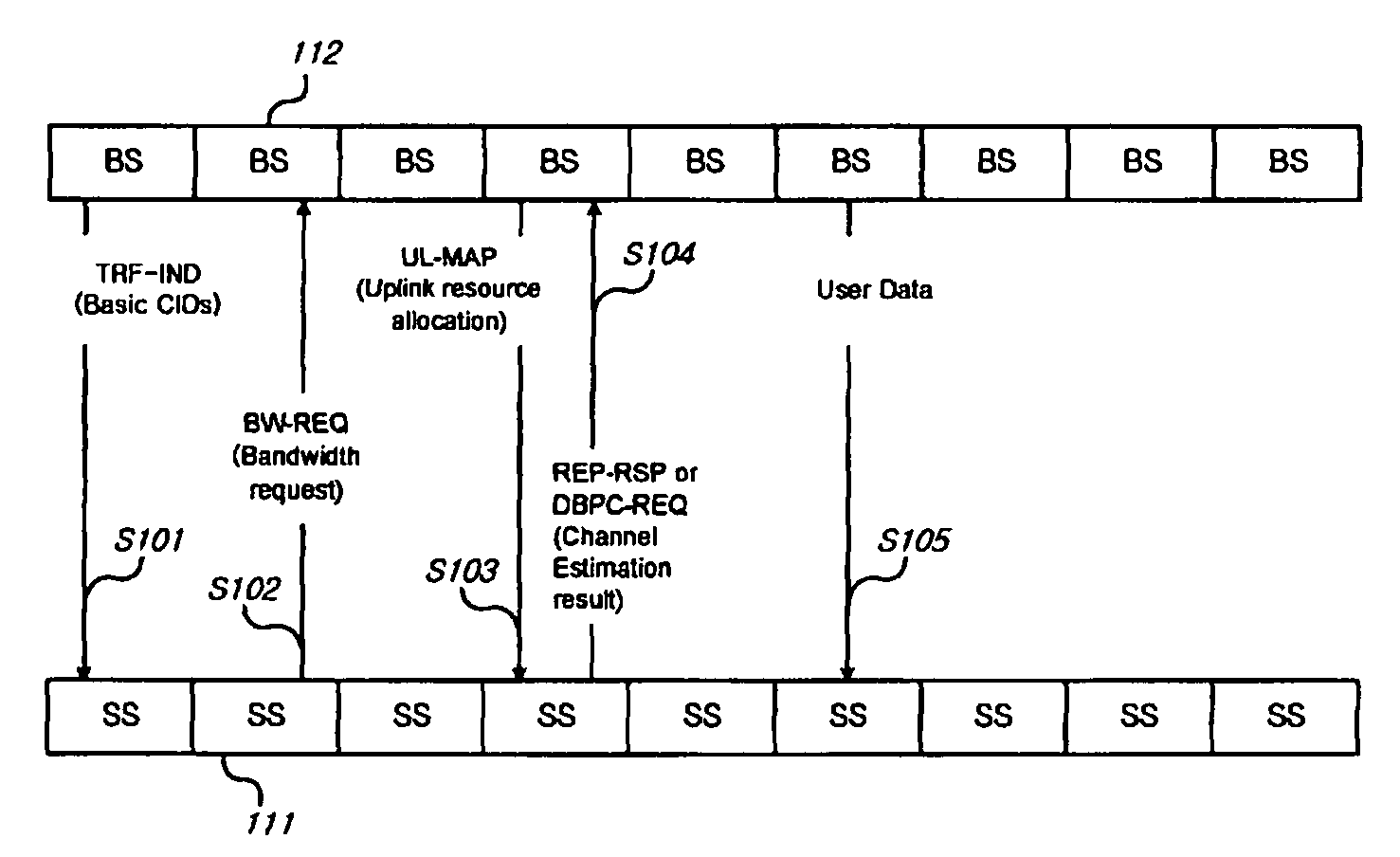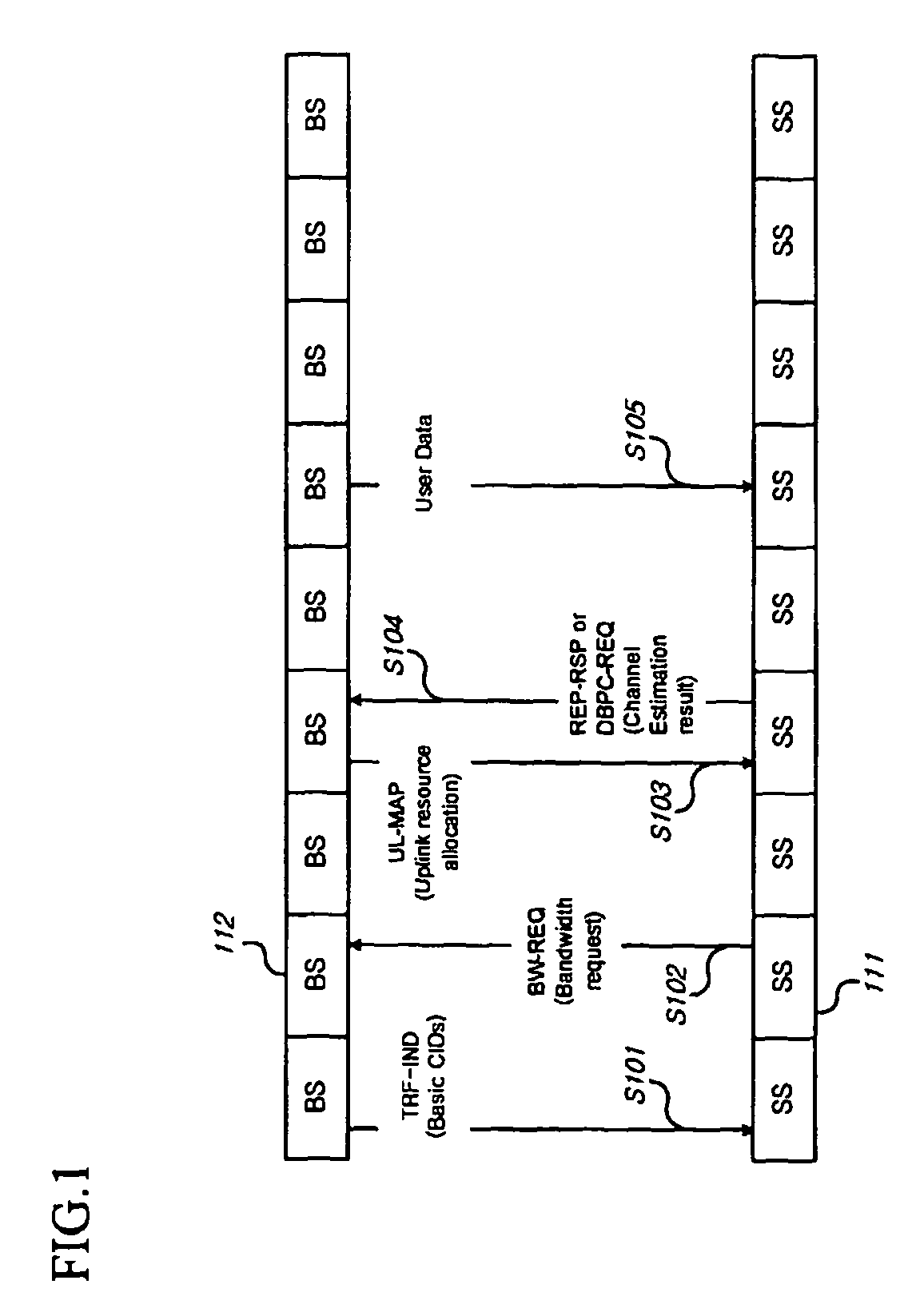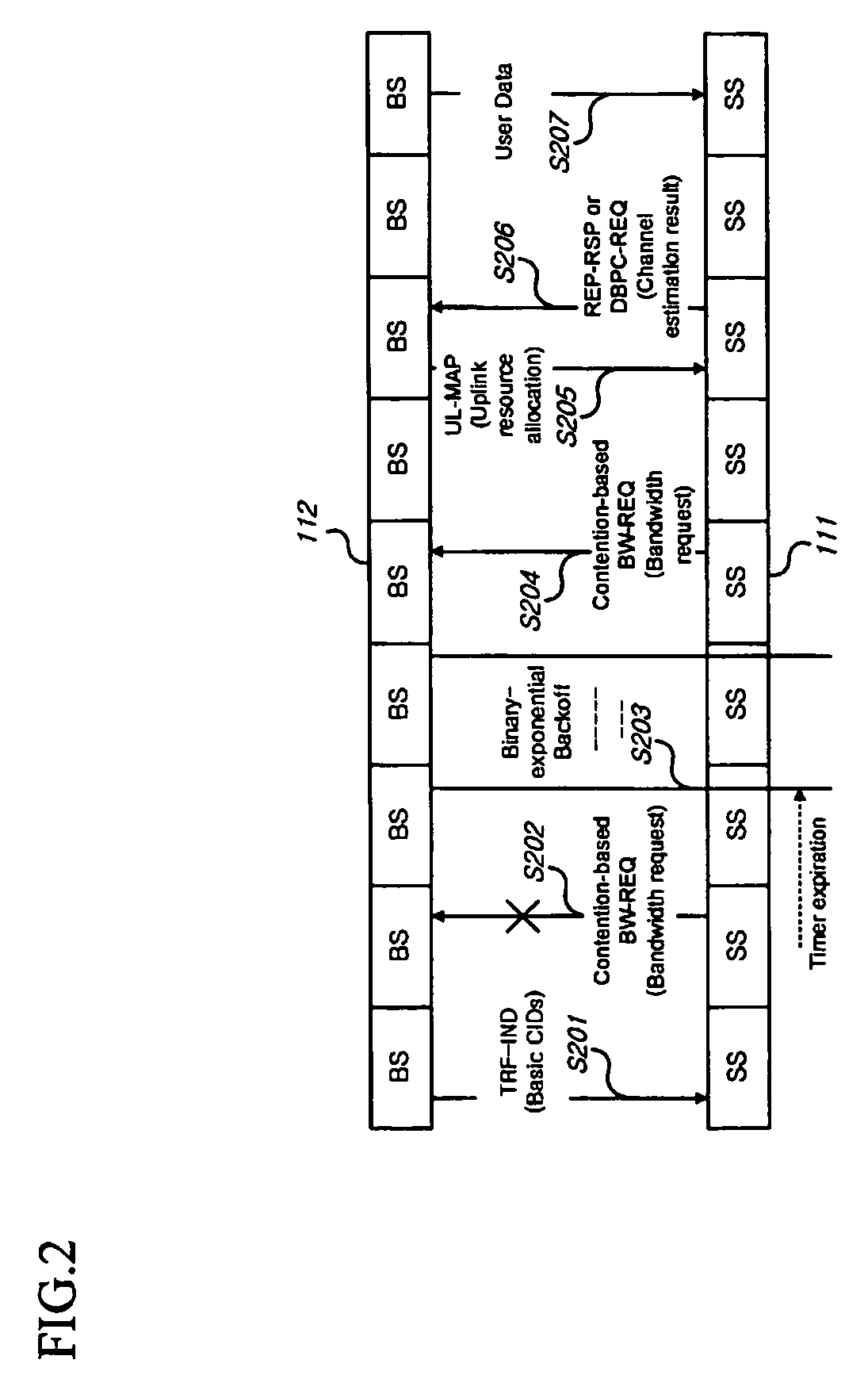Method for traffic indication and channel adaptation for sleep mode terminals, and an apparatus thereof
a technology of channel adaptation and traffic indication, which is applied in the direction of frequency-division multiplex, transmission monitoring, wireless commuication services, etc., can solve the problems of wasting radio resources, difficult to apply an appropriate adaptive modulation and coding level to the subscriber station, and difficult to deal with rapid changes in the channel environmen
- Summary
- Abstract
- Description
- Claims
- Application Information
AI Technical Summary
Benefits of technology
Problems solved by technology
Method used
Image
Examples
Embodiment Construction
[0065]In the following detailed description, only the preferred embodiment of the invention has been shown and described, simply by way of illustration of the best mode contemplated by the inventor(s) of carrying out the invention. As will be realized, the invention is capable of modification in various obvious respects, all without departing from the invention. Accordingly, the drawings and description are to be regarded as illustrative in nature, and not restrictive. To clarify the present invention, parts which are not described in the specification are omitted, and parts for which similar descriptions are provided have the same reference numerals.
[0066]In a system providing high-speed mobility, wireless radio channel quality information is very important because an adaptive modulation and channel coding level (AMC level) for a subscriber station is determined by this information. At this time, a subscriber station in the sleep mode may not estimate a channel quality and report t...
PUM
 Login to View More
Login to View More Abstract
Description
Claims
Application Information
 Login to View More
Login to View More - R&D
- Intellectual Property
- Life Sciences
- Materials
- Tech Scout
- Unparalleled Data Quality
- Higher Quality Content
- 60% Fewer Hallucinations
Browse by: Latest US Patents, China's latest patents, Technical Efficacy Thesaurus, Application Domain, Technology Topic, Popular Technical Reports.
© 2025 PatSnap. All rights reserved.Legal|Privacy policy|Modern Slavery Act Transparency Statement|Sitemap|About US| Contact US: help@patsnap.com



